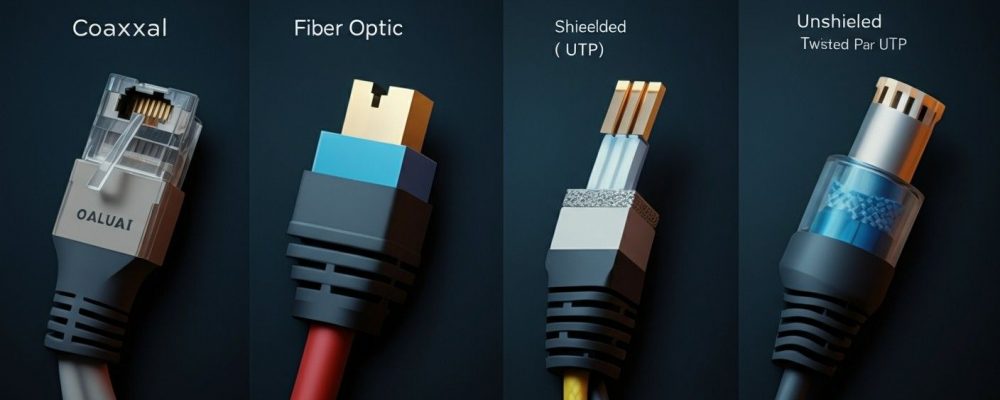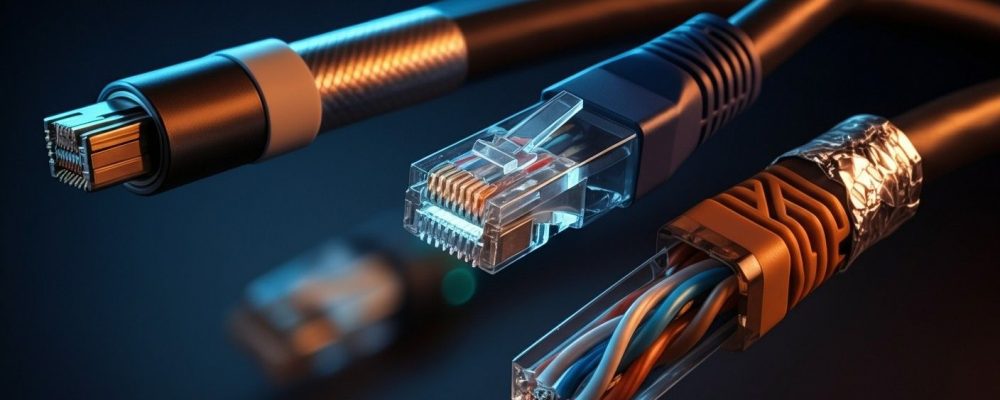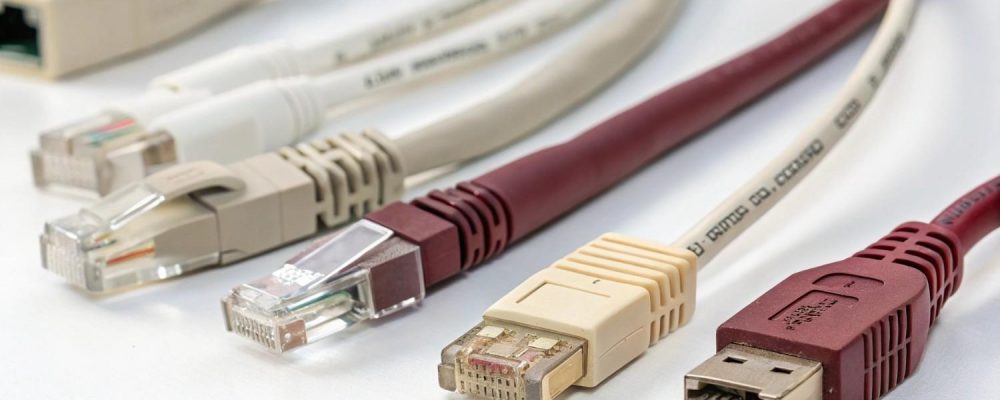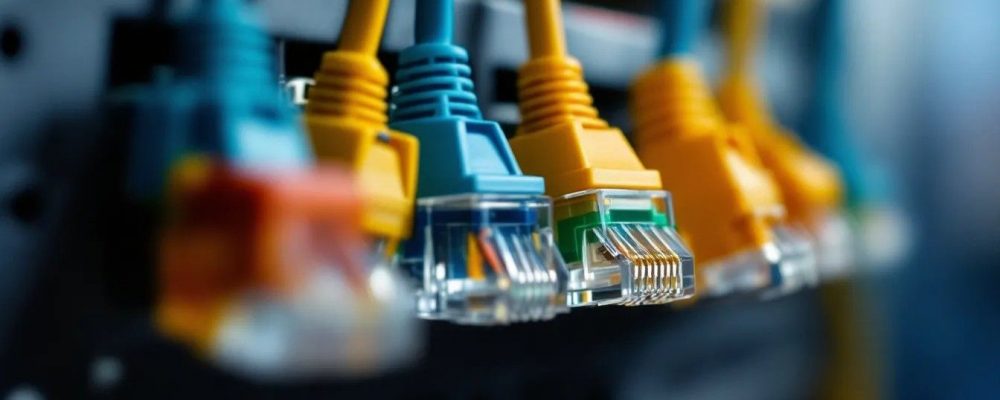Summary: Network cables ensure that data travels fast and reliably. Cables are designed for operation over varied distances and environments. Choosing the right type for speeds, interferences, and considerations for the future will build a foundation of smooth connections, and room for downtime or low ratings might enter.

In the present manufacturing sector, the industrial network system has come to be essential and requisite. Cable systems form the backbone of any network that is running efficiently. Proper network cabling can ensure not just the best performance but also scalability, less downtime, and preservation of your technology investment. From an enterprise down to an SMB in New Jersey, Pennsylvania, or even farther away, an understanding of network cabling categories becomes a critical factor for procurement and deployment decisions.
Drained with decades of experience in the domain of the infrastructural set-up of structured cabling wiring, Network Drops frequently states that seemingly small decisions about cabling can directly impact the speed, reliability, and flexibility of business networks in the long term. In this guide, we walk you through the primary types of network cabling, from their technical specifications to practical applications and factors affecting the choice of cabling in commercial settings.
Networking cables are a type of networking hardware used to connect a network device to one or more other network devices, or to connect two or more devices to a single computer or network device.
Network cables are a medium through which information and data travel from one network device to another. The type of cable used for a network depends on the network’s topology, size, and configuration. The different network cable types act as the network infrastructure’s supporting basis.
Selecting the correct type of network and Ethernet cabling and wiring can affect many different business functions because enterprise network admins utilize new technologies. The type of network cable used in a network infrastructure is one of the most vital aspects of networking across various industries.

This shield prevents interference from an electrical source, and STP cabling is usually used in locations where a good amount of electrical noise exists.
Advantages:
UTP cables are much simpler things. Two twisted copper wires with no additional shielding. They rely on the twisting action to counter interference, so this is the cheapest option and is easy to install.
Advantages
Key Specifications:
Category | Max Data Rate | Max Frequency | Typical Use Case |
Cat 5e | 1 Gbps | 100 MHz | General office LAN, VoIP |
Cat 6 | 10 Gbps | 250 MHz | High-speed LAN, video conferencing |
Cat 6a | 10 Gbps | 500 MHz | Data centers, high-density cabling |
Cat 7 | 10 Gbps | 600 MHz | EMI-heavy environments, industrial setups |
This paragraph highlights the fear that modern enterprise networks, mostly using twisted pairs and fiber optics, might frown upon coaxial cables for certain specialized applications. Being so structured, a coaxial cable has a center conductor wrapped with an insulator. In addition, a coating of aluminum foil is given, along with an outer jacket. This metallic closet resists signal interference and aids in transmitting signals for intermediate distances.
Advantages:
Limitations:
Fiber optic cables have a glass core with layers of protective material. They bypass electrical obstruction by propagating light rather than electronic signals, rendering them ideal for conditions with high electrical interference. Fiber optic cables are the new standard for networking across buildings due to their immunity to moisture and light.
Single-mode fiber( SMF) optical cables are thin glass cores surrounded by protective layers that allow light signals to be conducted over long distances with almost no signal loss. Therefore, SMF cables offer high bandwidth and are meant for high-speed data transmission applications over long distances, including:
Regarding high-value mission communications and dependable connectivity in which performance and reliability matter, nothing is better than an SMF optical cable because it can channel-light signal integrity over long distances.
Technical Specifications:
Attribute | SMF |
Core Diameter | 8-10 µm |
Max Distance | 40 km+ |
Bandwidth | 10 Gbps – 400 Gbps |
Light Source | Laser (often 1310 nm or 1550 nm) |
Multi-mode fibre optical cables have a core diameter larger than that of single-mode fibers, so many light signals can be launched at the same time. MMF cable is used in short- or medium-distance data transmission applications, thus providing cost-effective alternatives in campuses, Local Area Networks (LAN), and data center interconnects.
Due to high bandwidth for relatively lower distances and disadvantages of space and budgets, MMF optical cables are used. They provide reliable connectivity for modern-day network infrastructure, including the transfer of data, streaming of videos, and cloud computing.
Technical Specifications:
Attribute | MMF |
Core Diameter | 50-62.5 µm |
Max Distance | 300-600 meters |
Bandwidth | 1 Gbps – 100 Gbps |
Light Source | LED or VCSEL |
For businesses evaluating cabling options, understanding the differences between copper and fiber cabling is key to making strategic decisions.
Feature | Twisted Pair (UTP/STP) | Coaxial | Fiber Optic |
Data Rate | Up to 10 Gbps | Up to 10 Gbps (legacy) | Up to 400 Gbps+ |
Distance | 100 meters | 500 meters | 40 km+ (SMF) |
EMI Resistance | Moderate (better in STP) | High | Immune |
Installation Cost | Low | Moderate | High |
Scalability | Medium | Low | High |
Flexibility | High | Low | Moderate |
Typical Use | LAN, VoIP | CCTV, legacy networks | High-speed backbone, data centers |

Network cables are divided into eight segments with particular features and functionalities to suit different connectivity requirements:
Do you need your own data cabling installation for Monmouth or Mercer County? If you are, don’t wait to give our team a call today!

Choosing the correct network cabling is a careful choice to be made with respect to every aspect of business operations, from normal office connectivity to particular use applications, such as video conferencing, cloud services, or data-intensive workloads. Twisted pair cabling has been predominantly used in offices, coaxial cables serve some really niche applications, and fiber-optic cable ranks the best for any high-speed and long-distance transmissions.
Working with a prominent structured cabling company such as Network Drops in New Jersey, Pennsylvania, and surrounding locations helps ensure that the network is built for longevity and optimized for growth, efficiency, and reliability. Investing today in proper cabling infrastructure means businesses can confidently grow into the future without making any compromises.
The topology and environment, with the bandwidth needs and the budget in consideration, are important. Using an expert guarantees the right choice of a cable.
The data cables include coaxial, fiber optic, shielded twisted pair (STP), and unshielded twisted pair (UTP). Each for a different use.
The primary types are:
Each shall offer the performance and reliability needed for each application.
Five common CAT cables are CAT5, CAT5e, CAT6, CAT6A, and CAT7. They are differentiated based on:
Yes, all 8 wires in a CAT6 cable are utilized to support higher speed and bandwidth as opposed to CAT5 and CAT5e.
"*" indicates required fields
Scott Fcasni is the driving force behind Shock I.T. Support’s commercial datacomm cabling division, delivering expert solutions that power reliable, high-performance network infrastructures. With extensive experience in structured cabling and a commitment to precision, Scott ensures that every project—whether for small businesses or large enterprises—meets the highest standards of quality and scalability.